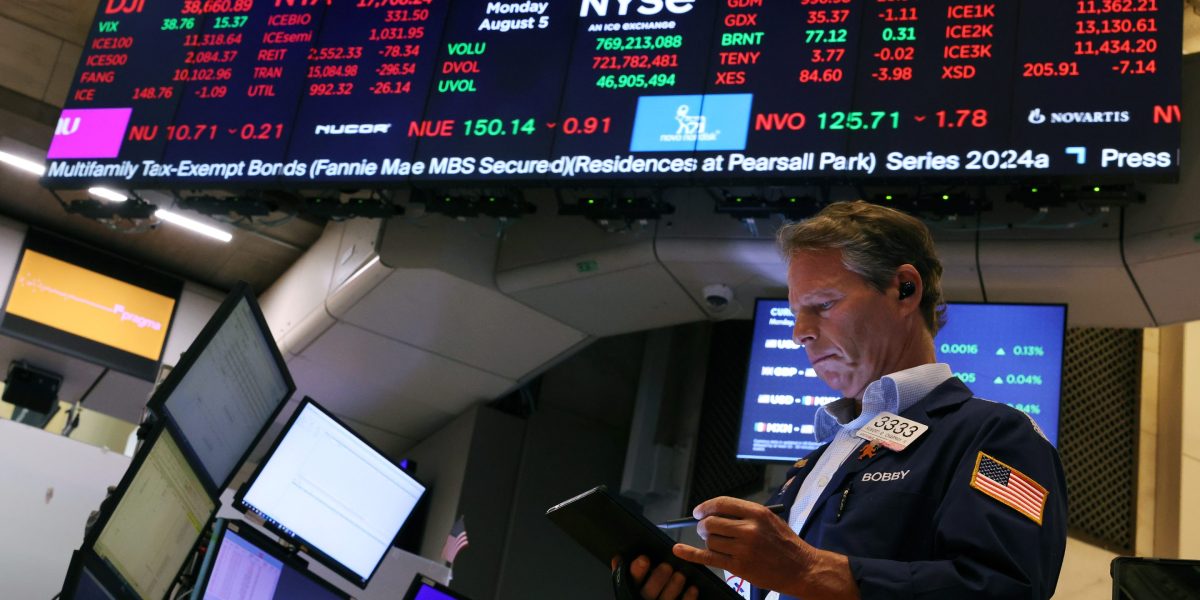Stocks usually take 6 months to recover from the type of selloff that just hit markets, BofA says
Following such pullbacks, 12-month returns on stocks were positive 73% of the time, analysts said.


Bank of America analysts said it may be six months before global stock markets regain losses from their recent dive.
The unwinding of the yen carry trade, where investors borrow yen at low interest rates to invest in other markets with higher rates, and weaker-than-expected jobs numbers in the U.S. prompted a 6.4% pullback over three days in the MSCI AC World Index, which tracks thousands of stocks across developed and emerging market economies.
Taking a look back at historical trends, the BofA analysts found that over the past 34 years there had been 26 similar three-day pullbacks of 6%-7% in the MSCI AC World Index. Of those times, equities took an average of six months to recoup their losses.
Following such selloffs, 12-month returns were positive 73% of the time, and the MSCI AC World Index averaged 17.9% in the subsequent year, the analysts wrote in a note on Monday. Equities in the tech, materials, and consumer discretionary sectors tended to rally the most in this 12-month period.
“Sentiment towards equities has recently weakened, but an improving global earnings cycle and an impending easing cycle provides a positive backdrop for equity markets longer-term,” they said.
While investors worried about a potential recession last week, some notable bears aren’t so sure that a downturn is guaranteed. That includes “Dr. Doom” economist Nouriel Roubini, who said in a Bloomberg TV interview last week that despite some evidence of a slowdown, “there’s some elements of strength in the economy.”
Even the inventor of the recession-predicting Sahm Rule, Claudia Sahm, said although the rule was triggered by the latest jobs report, it still isn’t time to panic.
In a separate note published Friday, BofA analysts warned investors against panic selling as the S&P 500 experiences selloffs of more than 5% three times a year on average. Since the 1930s, if an investor sat out the 10 best trading days of the year, their returns over time would have been up about 73%, compared to up 25,000% if they had not missed those days, the analysts wrote. The main message: stay invested.
“Panic selling can be a bad idea, as the best days often follow the worst days,” the analysts wrote.





